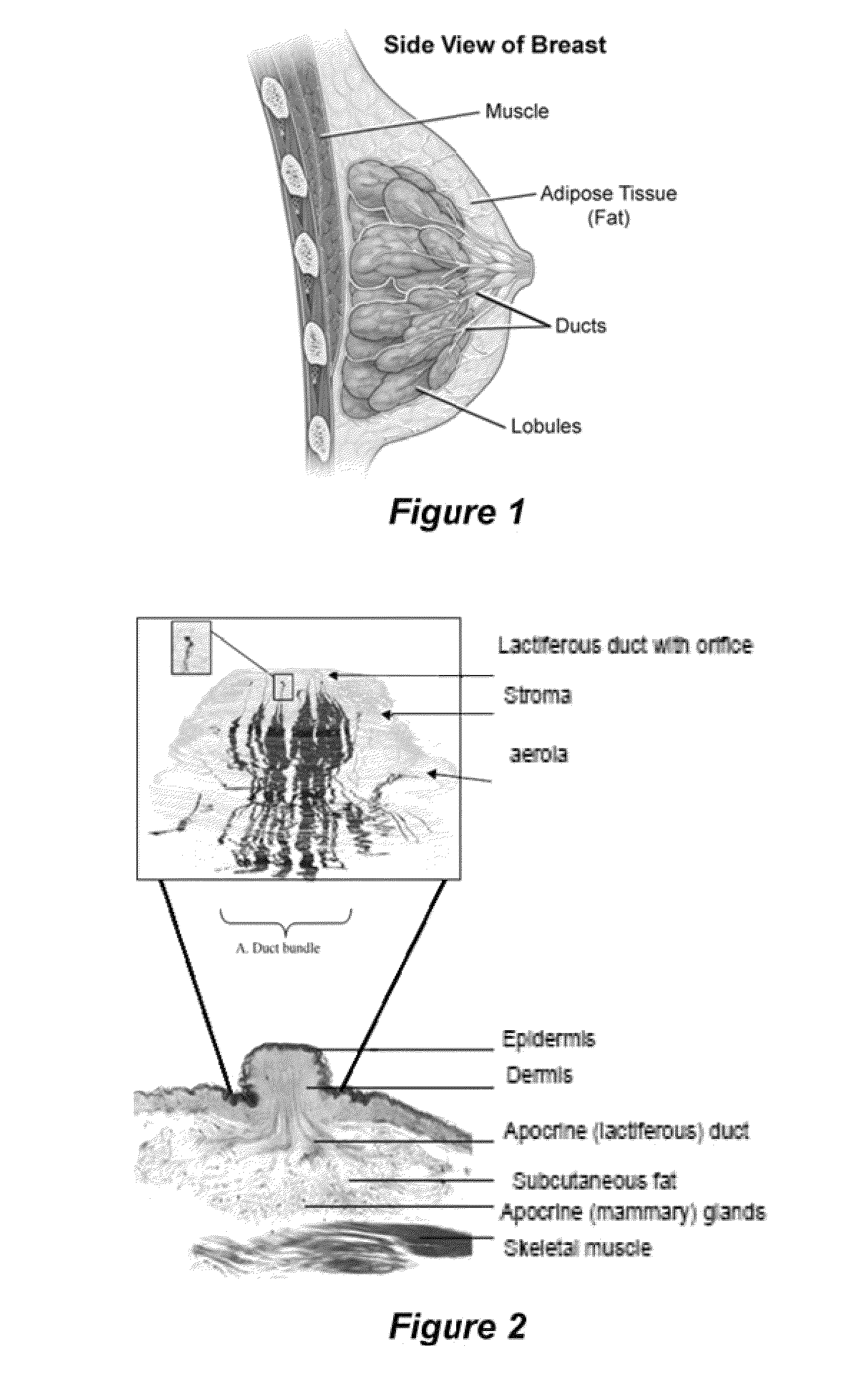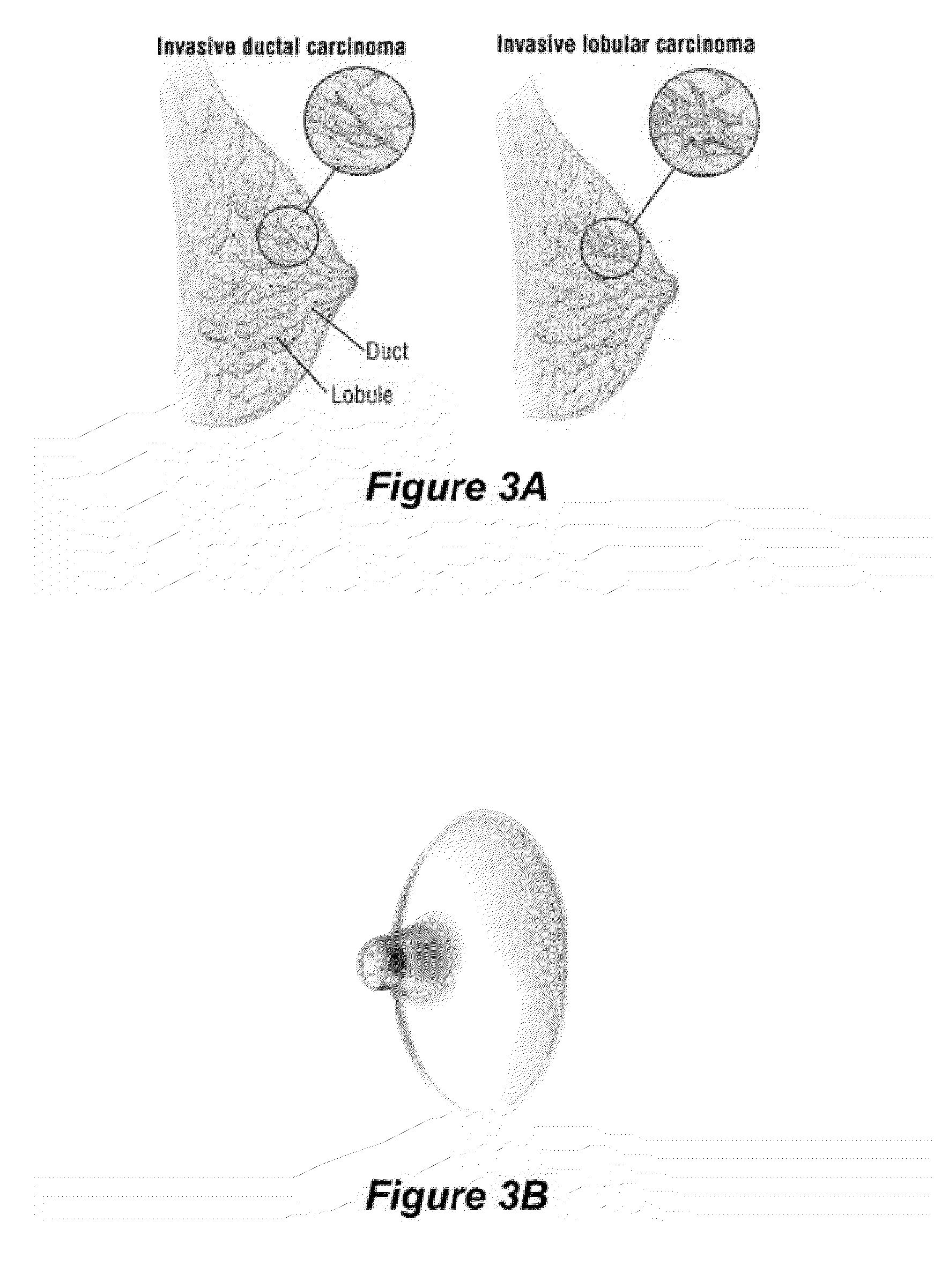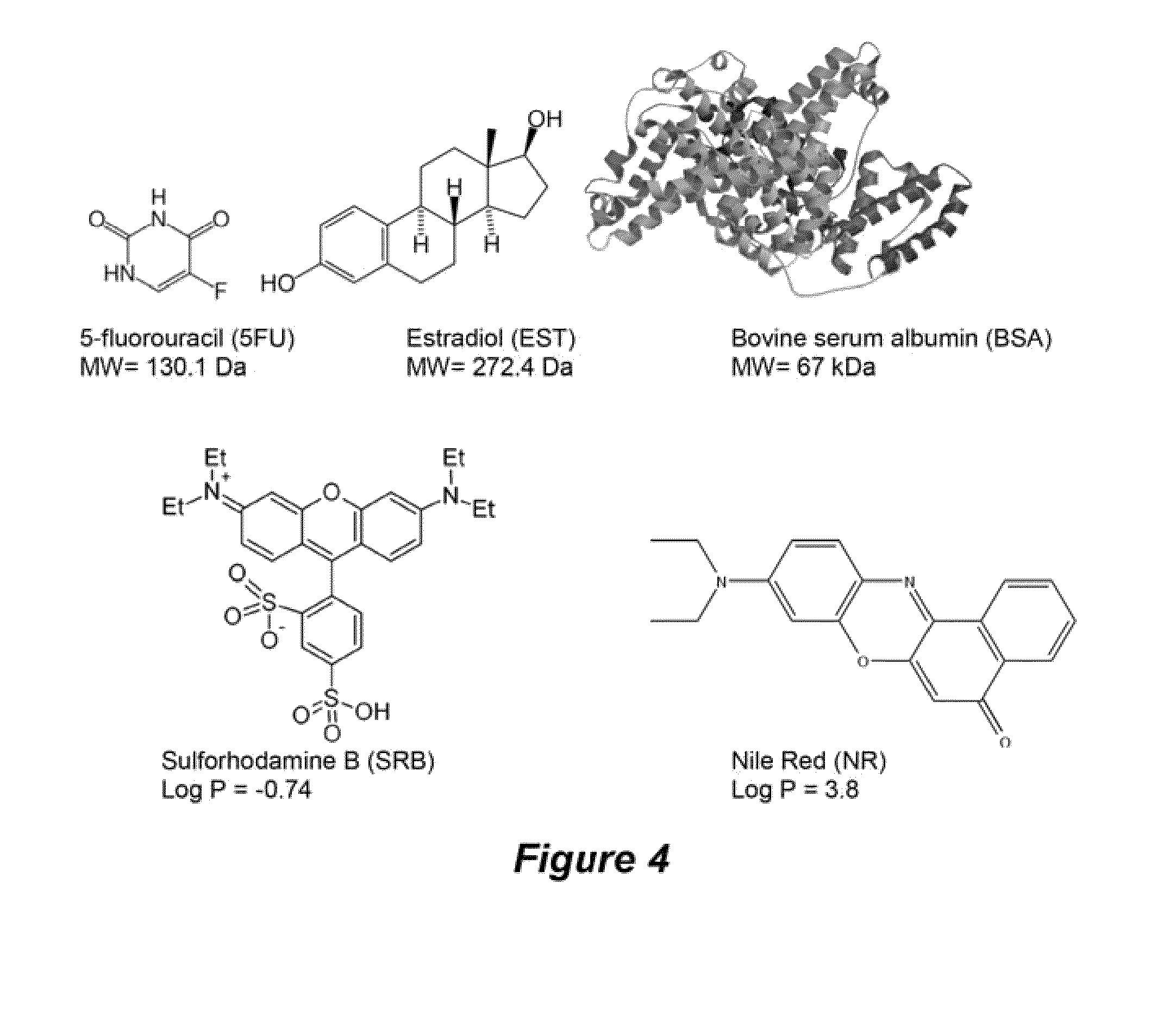Compositions and methods for localized drug delivery through mammary papillae
a technology of localized drug delivery and mammary papillae, which is applied in the field of compositions and methods for localized drug delivery through mammary papillae, can solve the problems of reduced doses, high local drug concentrations, and significant compliance problems, and achieves increased flux, increased applied dose permeation, and greater retention of said tamoxifen
- Summary
- Abstract
- Description
- Claims
- Application Information
AI Technical Summary
Benefits of technology
Problems solved by technology
Method used
Image
Examples
example 1
Evaluation of In-Vitro Penetration and Permeation Via Mammary Papillae
[0148]Drug penetration and permeation studies were performed to evaluate the feasibility of delivering various drug compounds into breast tissue through the mammary papilla. The compounds 5-fluorouracil (5FU), estradiol (EST), and bovine serum albumin (BSA) were used as examples of model hydrophilic, hydrophobic, and macromolecular drugs. The study determined whether these drug compounds can enter and pass through the mammary papilla by evaluating them in vitro using excised porcine mammary papilla.
[0149]Drug penetration and permeation via mammary papillae was performed in a Franz diffusion cell using excised porcine mammary papilla. Mammary papillae were individually treated with a saturated solution of 5FU spiked with 14C-5FU, a saturated solution of EST spiked with 3H-EST in ethanol:water (50:50), and a sub-saturated solution of BSA (10 mg / ml) in phosphate buffer spiked with 14C-BSA (FIG. 4). The receptor mediu...
example 2
Santalol Induces Caspase-Dependent Apoptosis and G2 / M Phase Cell Cycle Arrest in Human Breast Cancer Cells
[0175]Alpha-santalol, a major component of sandalwood oil, has chemopreventive effects on skin cancer both in vitro and in vivo. This example evaluated the effects of alpha-santalol on estrogen receptor-positive (MCF-7) and estrogen receptor-negative (MDA-MB-231) human breast cancer cell lines. Additionally, mechanisms of action were also studied.
[0176]MTT and BrdU cell proliferation ELISA showed inhibition of cell viability and proliferation in a time and dose-dependent manner in both cell lines (FIG. 13). In addition, TUNEL assay and flow cytometry results revealed that alpha-santalol significantly induced apoptosis in MCF-7 and MDA-MB-231 cells (FIGS. 14-21). Furthermore, western blot analysis of apoptotic proteins showed involvement of caspase-3, -8 and -9 in apoptotic cell death (FIGS. 22-25).
[0177]Induction of apoptosis by alpha-santalol was further confirmed by detecting ...
example 3
Transmammary Delivery of α-Santalol
[0184]A mammary papilla was set in an FSD and kept under saturation conditions for 12 hours. The solution was spiked with 4 μL 14C 5FU per ml solution. 400 μL was added to the donor cell. 7.4 PBS was added to the receptor cell. Three 40 μL samples of donor solution were taken to determine DPM of donors. 200 μL of sample was taken at each time point. After 48 hours, the mammary papilla was taken, washed, weighed and solubilized using a tissue solubilizer. After 24 hours, it was measured for DPM counts using, Cytoscint® cocktail.
[0185]
TABLE 3Experimental Design for Example 3.Experiment designDonor5% alpha-santalol in 2:1 ethanol:PBS (500 μL)ControlNo controlReceptor1:1 ethanol:PBSTreatmentDrug treatment and sampling for 48 hoursSkin saturationSkin was set up and kept for 6 hours with no drug indonor (only PBS) but receptor (1:1 ethanol:PBS)Sampling200 μL sample each time
Results.
[0186]
TABLE 4Delivery of α-Santalol.TissueLagCum. amt.retentiontimeFluxPp...
PUM
| Property | Measurement | Unit |
|---|---|---|
| v/v | aaaaa | aaaaa |
| molecular weight | aaaaa | aaaaa |
| molecular weight | aaaaa | aaaaa |
Abstract
Description
Claims
Application Information
 Login to View More
Login to View More - R&D
- Intellectual Property
- Life Sciences
- Materials
- Tech Scout
- Unparalleled Data Quality
- Higher Quality Content
- 60% Fewer Hallucinations
Browse by: Latest US Patents, China's latest patents, Technical Efficacy Thesaurus, Application Domain, Technology Topic, Popular Technical Reports.
© 2025 PatSnap. All rights reserved.Legal|Privacy policy|Modern Slavery Act Transparency Statement|Sitemap|About US| Contact US: help@patsnap.com



